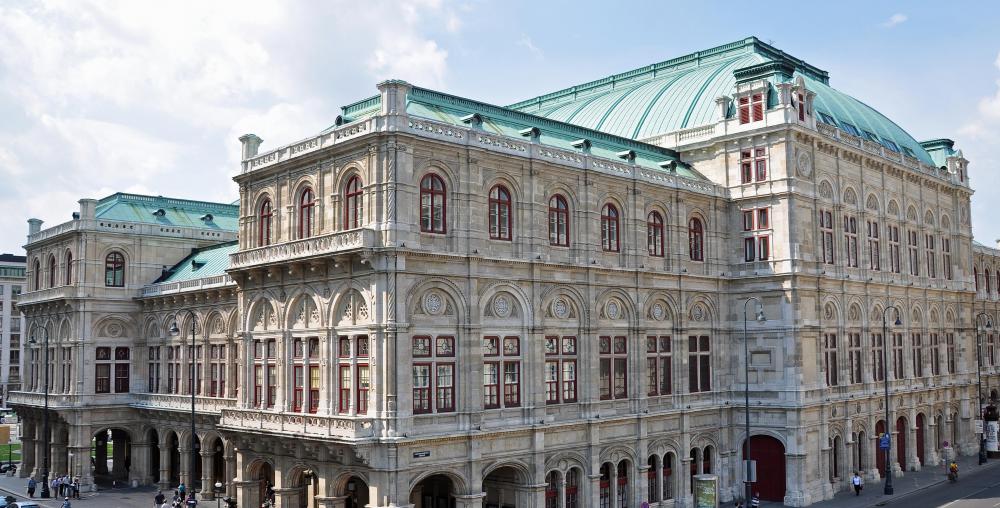At WiseGEEK, we're committed to delivering accurate, trustworthy information. Our expert-authored content is rigorously fact-checked and sourced from credible authorities. Discover how we uphold the highest standards in providing you with reliable knowledge.
What Should I Know About Austria?
Austria is a small country in Central Europe. It covers 32,400 square miles (83,900 sq. km), making it a bit larger than the state of Maine. It shares borders with the Czech Republic, Germany, Hungary, Italy, Liechtenstein, Slovakia, Slovenia, and Switzerland.
The region that is now Austria has been inhabited for millennia by various tribal groups. The land was occupied extensively by the Celts, and was later ruled by the Romans. The Slavs made their way into the region during the 7th century, and the Bavarians pushed their way in during the 8th century. Charlemagne conquered the region at the end of the 8th century, eventually losing control to the Magyars in the early 10th century.

Otto the Great, the first Holy Roman Emperor, retook the lands in the mid-10th century. During the next few centuries the lands would be extensively developed and settled, with fortified towns and large churches and monasteries built. In the mid-12th century Austria was made a Duchy within the Holy Roman Empire. The Babenberg dynasty controlled the region for most of this time, until dying out and eventually being replaced by the Habsburgs in the late 13th century.

The Habsburgs went on to acquire many more holdings to add to their Duchy over the next few centuries, and to consolidate their dynastic power. By the end of the 15th century, mostly through marriage, the Habsburgs had acquired control over Spain and its various holdings. In the 16th and 17th centuries, the Habsburg power continued to grow, and with it the power of Austria. From the 16th century on, nearly every Holy Roman Emperor would be a Habsburg. In the early 18th century the Habsburgs lost control of Spain during the War of Spanish Succession, but gained a number of other holdings in Europe, including much of Belgium, and the Austrian Netherlands. Austria held on to its power during the rest of the 18th century, despite a tumultuous succession and increasing wars with a number of other European powers and Prussia.

Following numerous defeats at the hands of Napoleon, the Holy Roman Empire eventually collapsed in the early 19th century, leaving the Habsburgs as the Emperors of Austria alone. In the mid-19th century, following a period of relative despotism, Austria began to liberalize. In the late-19th century a weakened Austria joined forces with Hungary to form the Austro-Hungarian Empire, which continued to implement liberal policies creating a Parliament and bill of rights.

When the Archduke Franz Ferdinand, a Habsburg, was assassinated by a Serb nationalist, events spiraled out of control and eventually led to World War I. The Central Powers, including the Austro-Hungarian Empire, were eventually defeated, and the Empire was dissolved. Austria reformed as German Austria, and the new state did relatively well in the aftermath of the war when compared to both Hungary and Germany.

Austria began shifting drastically towards Fascism in the 1930s, and was eventually annexed by Nazi Germany. At the end of the war Austria was occupied by Allied forces, and divided in a manner similar to that of Germany. Austria during this period pushed democratic practices, and moved towards independence over the next decade. In 1955 the country was granted independence again. Since independence Austria has stayed democratic, and pushed a number of liberal reforms, joining the European Union in 1995.

Austria makes a great destination for tourists throughout the year. Skiing in the Alps during the winter is one of the nation’s premiere attractions, and draws visitors from all over Europe and elsewhere. Vienna is an amazing city, full of culture and history, with a music and art scene that has few peers. Natural sites such as the Eisriesenwelt Caves, the largest ice caves in the world, or the three-tiered Krimml Falls, round out the experience.
Flights arrive daily in Vienna from cities throughout the world. Bus travel also connects Austria with the rest of Europe, and is much more affordable. Trains connect the country to points beyond as well.
AS FEATURED ON:
AS FEATURED ON:
















Discussion Comments
Social Security Administration has International agreements with some countries, one of which is Austria, where individuals who might have worked in both countries can be eligible for benefits from both countries, upon retirement. Retirement age in Austria is 60 for women and 65 for men. Certain criteria must be met but it is worth looking into it. Social Security Administration has all the information needed.
Post your comments